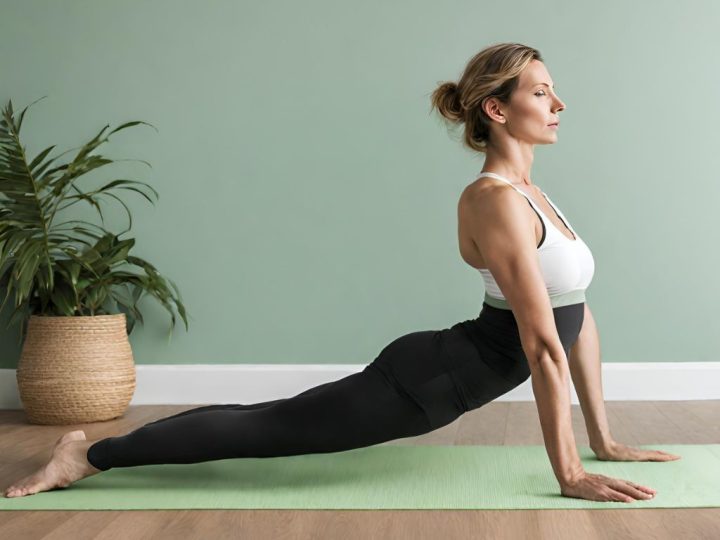
The Truth about Eating and Training with an Ectomorph Body Type
Greetings, fitness enthusiasts! Today, we embark on a journey to

Yoga lovers know the importance of having comfy and supportive workout gear, and Lifestyle Layne’s Active wear collection is designed to provide just that. It looks great and ensures maximum comfort and support, allowing you to fully enjoy your yoga sessions, whether at the gym or lounging at home. You can explore the entire collection here: Explore Lifestyle Layne’s Active Wear Collection
Managing lower back pain while enjoying your yoga practice can be challenging. However, there are effective ways to alleviate this discomfort and promote healing so you can fully enjoy the benefits of yoga. Here are five strategies to help ease lower back pain during your yoga sessions:
Before diving into your yoga routine, preparing your body gently is crucial. Begin with slow, controlled movements that increase blood flow to your muscles and loosen your joints. Pay special attention to gentle stretches that target your lower back. Poses like child’s pose, cat-cow stretch, and supine knee-to-chest pose can be particularly effective in relieving tension in your lower back. These initial stretches set the stage for more advanced yoga poses, ensuring a smoother practice.
Yoga strongly emphasises correct alignment, especially when dealing with lower back pain. Incorrect alignment can strain your lower back and worsen your discomfort. Working with an experienced yoga instructor can guide you toward the correct alignment for each pose. Engage your core muscles to support your lower back and maintain a neutral spine during standing poses, forward bends, and twists. Using props like blocks and straps can help you achieve the correct alignment, making your practice safer and more comfortable.
Certain yoga poses can exacerbate lower back pain, especially those that involve deep backbends or intense twists. Instead of avoiding these poses entirely, consider modifying them to suit your needs. For example, if full backbends like the wheel pose are challenging, opt for supported backbends using props like a yoga block under your sacrum. In twisting poses, focus on lengthening your spine and twisting from your upper back while keeping your lower back stable. Modifying poses allows you to experience their benefits without straining your lower back.
A strong core provides vital support for your lower back, helping to alleviate pain and prevent future discomfort. Integrate exercises that target your core muscles into your yoga routine. Consider incorporating variations of planks, boat pose, and bird-dog pose. These exercises strengthen your abdominal core, obliques, and back muscles, creating a stable foundation for your spine. As your core strength improves, you’ll likely experience reduced lower back pain during your yoga practice and daily activities.
Stress and tension have the potential to worsen lower back pain. Yoga provides a range of relaxation techniques, including deep breathing, meditation, and guided imagery, which can effectively alleviate stress and foster relaxation. Integrate mindful breathing exercises into your routine, focusing on deep inhalations and exhalations to soothe your nervous system. Furthermore, engage in progressive muscle relaxation, where you deliberately release tension from various body parts, starting from your toes and gradually moving up to your head. These relaxation practices relieve lower back discomfort and elevate your overall well-being.
In conclusion, easing lower back pain during yoga involves a combination of mindful warm-ups, proper alignment, pose modifications, core strengthening, and relaxation techniques. By incorporating these strategies into your practice and complimenting them with Lifestyle Layne’s Yoga collection, you can minimise discomfort, prevent injuries, and fully embrace the transformative benefits of yoga. Remember to listen to your body, honour its limitations, and seek guidance from experienced yoga instructors or healthcare professionals when needed. With patience, consistency, and self-care, you can develop a yoga practice that supports your lower back health and enhances your overall quality of life.

Greetings, fitness enthusiasts! Today, we embark on a journey to

Welcome, fitness enthusiasts! Today, we embark on a journey to

Greetings, fitness enthusiasts! Today, let’s delve into the core of
Lifestyle Layne: Monday – Friday 7am -3pm
Brisbane Creatives Hub – subject to dates and times booked for Workshops/Classes. Tickets bookings online or instore.